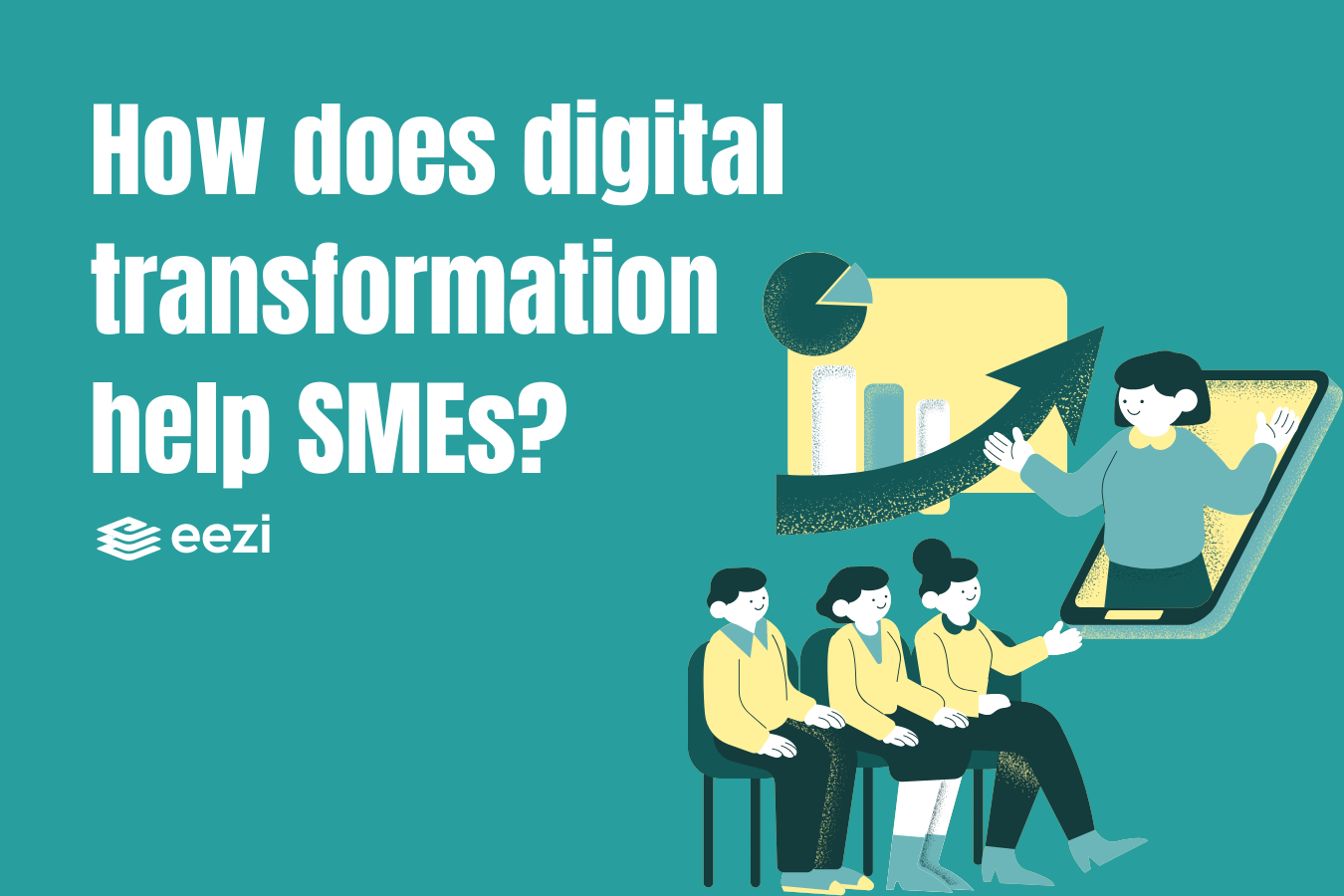In what ways do automated HR and payroll help Philippine SMEs?

Large-sized businesses have long enjoyed the many advantages of automated HR and payroll. They were able to become flexible and agile by implementing a dependable HRIS to streamline procedures. As a result, they can make operational and market adjustments decisions more quickly.
But what about SMEs in the Philippines?
Many Philippines SMEs still fail to recognize the advantages of automation and digital transformation. Besides, small enterprises and startups put more emphasis on improving profitability than simplifying operations.
Moreover, most of them believe they can still handle their HR and payroll using conventional techniques while having a smaller workforce.
However, when your organization expands, operations, staff management, compliance, and payroll may become more complex. Here we will explore how automated HR and payroll help small and medium-sized enterprises (SMEs) digitalize.

What is the role of small and medium enterprises (SMEs) in the Philippines?
Philippine SMEs greatly influence employment, revenue, and general economic development. In other words, they are essential to the economy. Through the pandemic, it was SMEs that managed to keep the economy booming.
Additionally, SMEs are vital to the Philippines’ efforts to achieve its objective of becoming an upper middle-income nation soon. Here are a few ways SMEs can do this:
Create additional goods and services.
SMEs are essential in the maintenance of the services sector and food security. First, they are more adaptable and agile compared to huge businesses and enterprises. As such, they can recognize new trends and react faster to shifting consumer demands.
As a result, fresh and innovative goods and services become more accessible. Such product testing makes SMEs innovative and diversified drivers. Moreover, there are many SMEs, which allows them to serve more markets and meet other specialized client needs.
To sum, SMEs contribute to a more dynamic and competitive market, giving people more options and promoting economic growth. The private sector, government, and stakeholders may grow and improve access to goods and services by establishing an ecosystem that supports SMEs.
Offering opportunities
SMEs contribute to solving the unemployment problem by generating jobs in areas enterprises cannot reach. As they grow and expand operations, these companies will also require a larger workforce.
As such, SMEs also support job creation through supply chains along with direct employment of personnel. This is true, especially since they rely on vendors, associates, workers, and distributors to help them run their businesses.
Moreover, SMEs create dependable employment prospects for the populace because they frequently operate within local areas. As a result, residents are less likely to relocate to larger cities due to greater economic activity and improved lifestyle standards.
Encourage economic growth
The Philippines, a developing economy aiming to become an upper middle-income nation, has a lot to gain from SMEs. SMEs foster growth and development by encouraging local markets, raising rural incomes, and expanding employment possibilities.
Moreover, SMEs can immediately adjust to the changing requirements of the community and have a greater sense of the regional markets. Lastly, they play a significant role in advocating for more inclusive economic growth.
How many percent are SMEs in the Philippines?
According to the most recent data from the Philippine Statistics Authority, 1,080,810 businesses are operating in the country. In percent terms, small and medium enterprises (SMEs) comprise 99.58% of all registered businesses in the Philippines.
What are SME problems in the Philippines?
The core of the Philippine economy is the SME sector. They foster innovation, produce jobs, and encourage economic expansion. However, managing a small firm is not exempt from complexity. As such, small business owners still have to deal with numerous challenges, especially in the digital age.
The most significant challenge is getting access to funds. It can be challenging to finance development or extend operations for many small organizations since they lack the resources to get loans from financial institutions.
The majority of business owners can also find it difficult to compete with bigger companies that benefit from greater brand recognition and marketing resources.
Compliance with government regulations is another issue that SMEs face. Small business owners may find it expensive to comply with rules, and failure to do so may result in severe fines or even closure.
The worst thing that can occur to small and medium-sized enterprises (SMEs) is when it fails. It’s not only about the earnings; running your business comes with many expenses and drawbacks, such as the cost of marketing, advertising campaigns, PR, hiring staff who require training, etc.
How does digital transformation help SMEs?

Today’s technology world makes it vital for businesses to meet the needs of their customers.
Businesses that concentrate on using cutting-edge technology and digitalization expand more quickly, enhance their business processes, and achieve new levels of success. Given this, SMEs’ digital transformation is a means of modernizing your business operations to promote employee efficiency and increase output.
Philippine SMEs can benefit from digital technology to improve business operations, launch marketing campaigns that produce results, solidify their corporate strategy, and generate more revenue.
Here are other ways that digital transformation helps SMEs:
Automated systems increase accuracy
Automating tiresome processes has become essential for firms in today’s fast-paced corporate environment to handle critical data, increase productivity, and decrease human error. Thankfully, the days of workers managing mountains of paperwork to keep records up to date are long gone.
Digitalization provides helpful tools for business administration, from keeping track of employee attendance to computing salaries and inventory control to updating customer records and automating email and marketing activities.
Digitalization improves collaboration
Using digital transformation to increase operational effectiveness and adopt a customer-centric environment is one of the ultimate goals for businesses. This is achievable only when everyone is collaborating together smoothly and on the same page.
Involving designers, product managers, developers, and marketers will help your web design company’s staff operate more effectively and take the initiative. Finally, collaboration also encourages transparency in the workplace, and members experience more satisfaction and engagement.
What are the examples of digital transformation in Philippine SMEs?
When done correctly, digital transformation drives SMEs to a new level of expansion. Take a look at some of the best uses of digital technology if you still need to get ideas for digital transformation in place, and discover how they maintain their competitiveness in the market.
Several businesses have served as positive examples of digital technology by employing the most up-to-date technology to meet their business objectives. See how businesses used digital transformation to approach the process and how they achieved their goals.
Food and beverage sector
Chatbots powered by artificial intelligence (AI) assist businesses in achieving high standards of food safety and lowering costs throughout the various levels of food processing. By maximizing the advantages of digital transformation, the food and beverage industry can better reach its full potential.
Retail and manufacturing sector
In retail trade, digital transformation entails disruption, new offerings, and technologically enhanced system performance. Retailers must look beyond minor improvements and reimagine procedures to develop a linked customer interaction strategy leveraging technology.
Retailers must adapt to this changing customer journey and change with it. Process simplification, cost-cutting, and increased production are all benefits of digital transformation in retail.
Read more:
What are the digital solutions for SMEs?
Here are the common digital solutions for small and medium enterprises (SMEs):
Project management tools
Adopting project management software is one of the most significant digital solutions for Filipino SMEs if you have a lot of work to manage. Generally, you may use these apps to manage your work, obligations, and calendar digitally.
These technologies can be set up to notify you of impending occasions and activities, like the date, time, and place of your next meeting.
Email marketing
Email marketing platforms make it simple to update your subscribers on recent company developments and any special offers or promotions you might be running. Many of these services allow you to produce email newsletters for your social networking platforms automatically.
HR Administration
SMEs typically cannot afford the costs of employing a full-time or even part-time HR department in addition to all forms of digital solutions for the company. In this case, they can delegate all planning, payroll, and company announcements using HR software.
How can automated payroll help Philippine SMEs digitalize?
Any business can benefit greatly from an automated payroll system. The benefits are as follows:
Improved Human Resources
The Philippines’ small enterprises can gain a lot from an HRIS solution, including a streamlined HR approach.
Most startups and small enterprises don’t have a specialized HR team. The owner frequently handles all HR-related duties or assigns them to one admin staff member. Managing bookkeeping, timekeeping, hiring, and promotion processes can be very stressful.
By automating your HR, you may eliminate time-consuming administrative procedures and free up your time to concentrate on expanding your company. Remember: more time means greater wealth.
Simplified day-to-day tasks
SMEs can use automated HRIS to assign authorization to essential employees and streamline tasks. In addition to better management-employee communication, this also ensures effective task monitoring.
Knowing how every task is coming along and keeping track of the time spent on various tasks might provide fresh ideas for improvements. You can decide how to standardize every working method and enhance internal procedures.
Time-saving
The primary benefit of automated payroll is saving you time. You don’t have to spend time performing the calculations manually using a computerized system because they are all done automatically.
Spending less time on payroll allows you to concentrate on other crucial activities while saving money on payroll processing. Additionally, automating your payroll enables you to manage a larger workforce without adding more employees to assist with the process.
Related:
Automate Your Payroll with eezi!
Say goodbye to time-consuming manual payroll procedures.
eezi provides an automated payroll solution that eliminates the need for a third-party payroll service provider.


